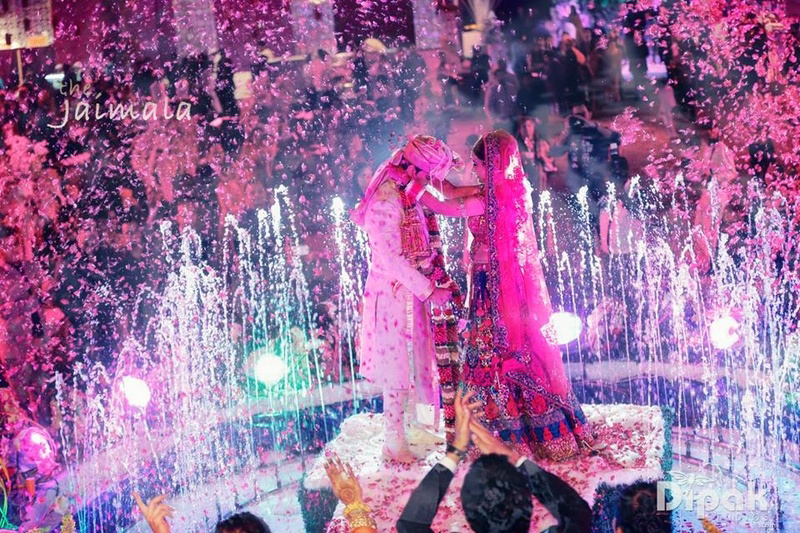As the demand for experiential and multi-functional venues grows in India, investing in a well-planned event space can yield substantial returns. Event venues, ranging from destination wedding resorts to spaces for banquets, fairs, product launches, pet ceremonies, and seminars, have become crucial in catering to India’s diverse cultural and professional needs. This guide will educate investors on how to design, plan, and budget for multi-functional event spaces, leveraging the power of architecture, landscape design, and community-driven strategies.
Understanding the Indian Event Market
India's event management market is projected to grow at a CAGR of 15% and is expected to reach INR 10,000 crore by 2030. A significant contributor to this growth is the wedding industry, valued at approximately INR 3.75 lakh crore annually. Corporate events, fairs, and niche ceremonies like pet weddings are also seeing steady growth.
Diversity Across Indian Regions and Communities
India’s cultural diversity translates into unique wedding traditions and event requirements:
1. North India
Big Fat Indian Weddings: Large-scale, opulent celebrations with grand banquet halls, outdoor baraat spaces, and luxury accommodations.
Preferred Regions: Rajasthan (heritage palaces like Udaipur’s Lake Palace) and Punjab.
2. South India
Traditional Weddings: Focus on mandaps, temple-inspired architecture, and vegetarian catering.
Preferred Regions: Tamil Nadu (temple towns like Madurai), Kerala (backwaters).
3. East India
Bengali Weddings: Require large indoor spaces for rituals like sindoor daan and shubho drishti, with emphasis on intricate decor.
Preferred Regions: Kolkata and the scenic locales of Assam and Meghalaya.
4. West India
Destination Weddings: Goa is a hotspot for beach weddings, while Gujarat prefers traditional indoor spaces with intricate designs.
5. Muslim and Christian Communities
Nikah/Walima: Segregated spaces for male and female guests, with a focus on understated elegance.
Christian Weddings: Spaces inspired by chapel-like settings, complemented by banquet halls for receptions.
Components of a Successful Multi-Functional Venue
1. Site Masterplanning and Landscape Architecture
Landscape architecture plays a pivotal role in creating aesthetic, functional, and sustainable spaces. A well-designed site ensures:
Traffic Flow and Accessibility: Seamless circulation for vehicles, valet parking zones, and pedestrian pathways.
Sustainability: Native and adaptive plants, rainwater harvesting systems, and permeable pavers reduce operational costs.
Event Flexibility: Landscaped gardens for outdoor ceremonies, amphitheaters for performances, and open lawns for fairs and exhibitions.
Pet-Friendly Spaces: Outdoor zones with pet-safe materials and shaded areas.
2. Facilities and Amenities
Multi-functional venues should cater to diverse events and communities:
Indoor Spaces: Banquet halls, conference rooms, bridal suites, and green rooms.
Outdoor Spaces: Landscaped gardens, poolside lounges, and photo-friendly zones.
Recreational Amenities: Spas, gyms, swimming pools, and play areas for children.
Technology Integration: High-speed Wi-Fi, audio-visual setups, and smart lighting systems.
Pet Zones: Dedicated areas for pet ceremonies with play spaces and pet care facilities.
3. Architectural Planning
The design must reflect cultural sensitivities while ensuring functionality. Features to consider:
Cultural Elements: Traditional motifs, temple-inspired facades, or minimalist modernist designs for secular spaces.
Modular Layouts: Spaces that can adapt to weddings, corporate events, or exhibitions.
Sustainability: Eco-friendly materials, energy-efficient systems, and passive cooling techniques.
Approximate Budget for Investment
Excluding the value of the site, a high-level budget for a mid-scale, multi-functional event venue could range between INR 25 crore and INR 60 crore, depending on the size, location, and complexity. Here’s a breakdown:
1. Architecture and Engineering: INR 12–18 crore
Includes design, structural engineering, MEP (mechanical, electrical, plumbing) systems, and construction.
2. Landscape Architecture: INR 5–8 crore
Covers site grading, native planting, irrigation, pathways, lighting, and water features.
3. Interior Design and Furnishings: INR 6–10 crore
For banquet halls, guest suites, and communal spaces.
4. Technology and AV Systems: INR 2–4 crore
5. Sustainability Features: INR 2–3 crore
Includes rainwater harvesting, solar panels, and green building certifications.
Business Opportunities from Multi-Functional Venues
1. Revenue Streams
Weddings and Celebrations: Hosting weddings, anniversaries, and birthdays.
Corporate Events: Conferences, seminars, and product launches.
Fairs and Exhibitions: Renting outdoor spaces for cultural events or trade shows.
Pet Ceremonies: A growing niche market.
Accommodation: Offering rooms for destination weddings or overnight events.
Catering and Dining: Revenue from in-house catering and restaurants.
2. Collaborations and Branding
Partnering with wedding planners, corporate agencies, and pet care brands.
Leasing spaces for photoshoots and film productions.
3. Added Value for Sustainability
Lower operational costs from eco-friendly systems.
Appeal to eco-conscious clients.
Case Studies
1. Hotel Bliss, Tirupati
This project integrated permeable pavers to manage rainwater, grass pavers for parking areas, and a thermally comfortable surface. Shallow slopes directed water flow to recharge pits, while native and adaptive plants enhanced biodiversity. This sustainable design reduced costs and environmental impact, making the venue both functional and eco-friendly.
2. Leela Palace, Udaipur
A premier wedding venue, this property balances traditional Rajasthani architecture with modern luxury. Landscaped gardens, grand courtyards, and lakefront views make it an iconic location for destination weddings.
3. Local Fairgrounds in Kerala
Temporary pavilions, well-designed pathways, and zoned layouts have made these grounds versatile spaces for fairs, exhibitions, and weddings.
Market Research Insights
1. Destination Weddings: A report by CNBC suggests that 20% of Indian weddings are destination-based, with clients spending INR 20–50 lakh per event.
2. Corporate Events: India’s MICE (Meetings, Incentives, Conferences, Exhibitions) industry contributes nearly 18% to the event sector’s revenue.
3. Pet Ceremonies: Growing urbanization and increasing pet ownership have boosted the demand for pet-friendly event spaces.
Conclusion
Investing in a multi-functional event venue is a lucrative opportunity, especially when designed with foresight and flexibility. By integrating thoughtful architecture, landscape design, and cultural nuances, such venues can cater to a wide range of clients, ensuring year-round bookings and high ROI. The future lies in creating spaces that are not only functional and inclusive but also environmentally and culturally responsive.
For investors ready to capitalize on India’s booming event market, the time to act is now. A well-designed venue is not just a property—it’s a legacy.




No comments:
Post a Comment